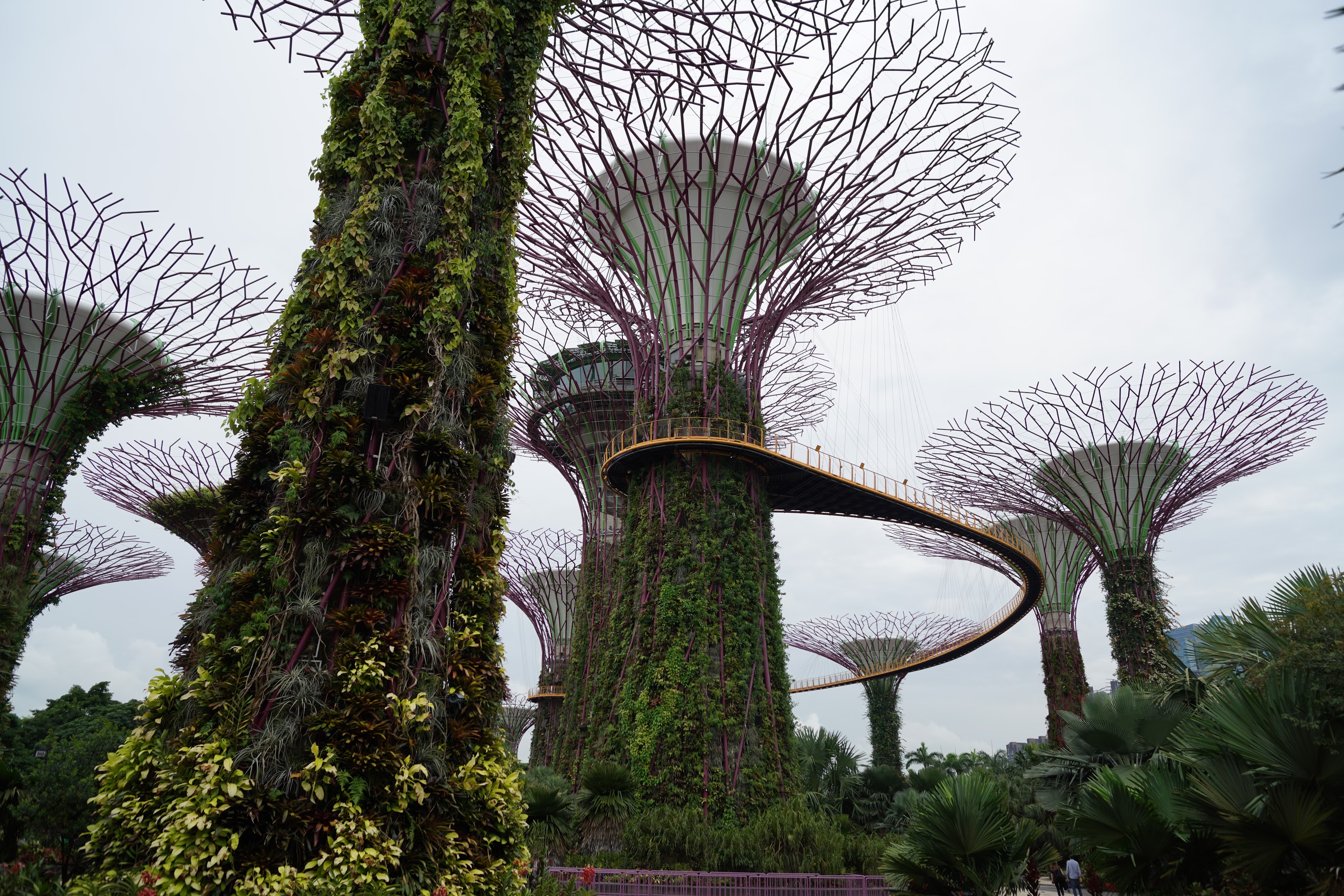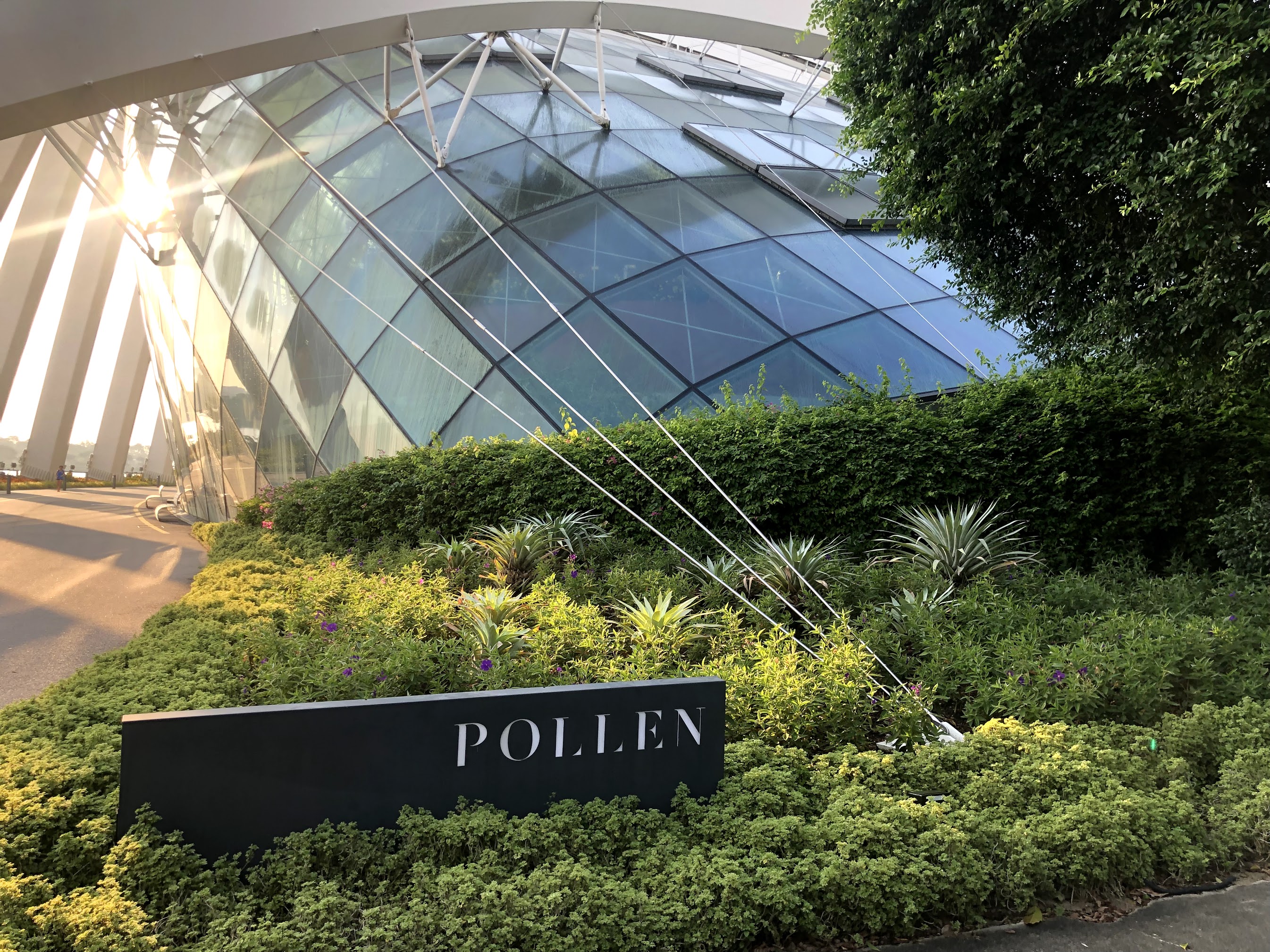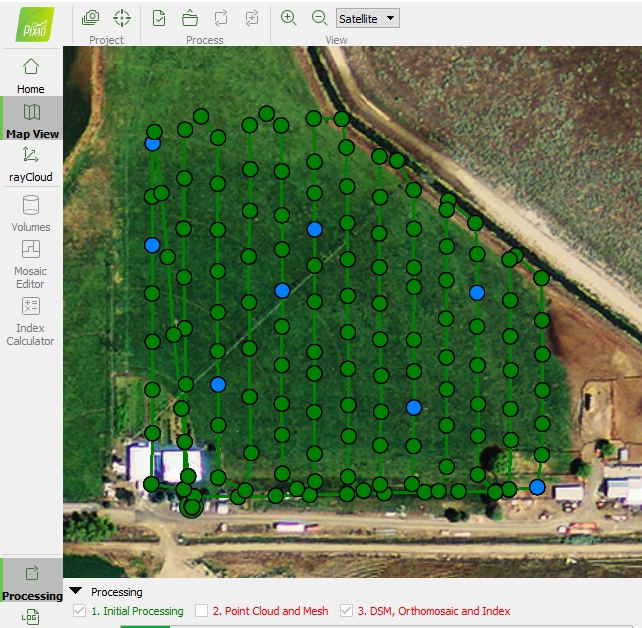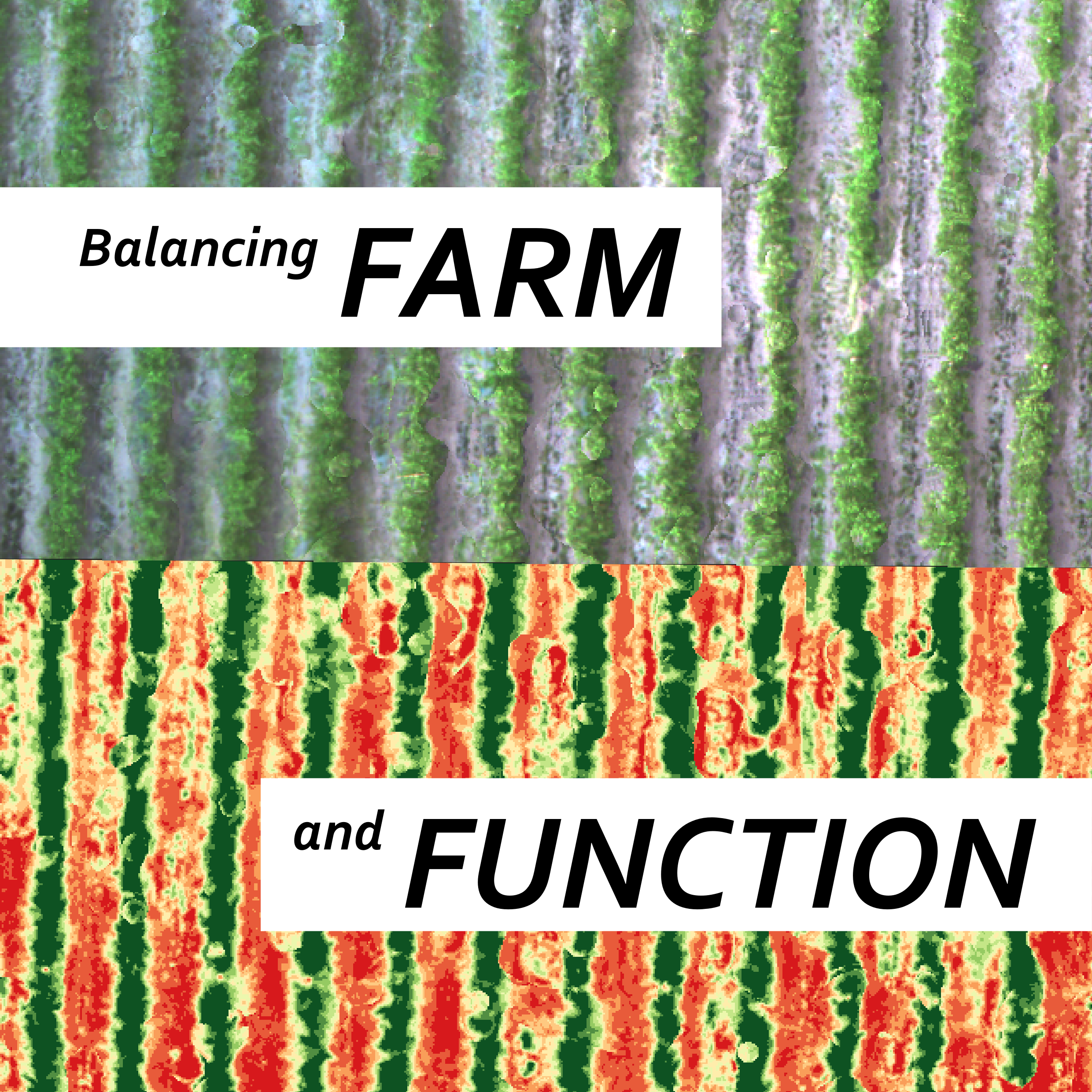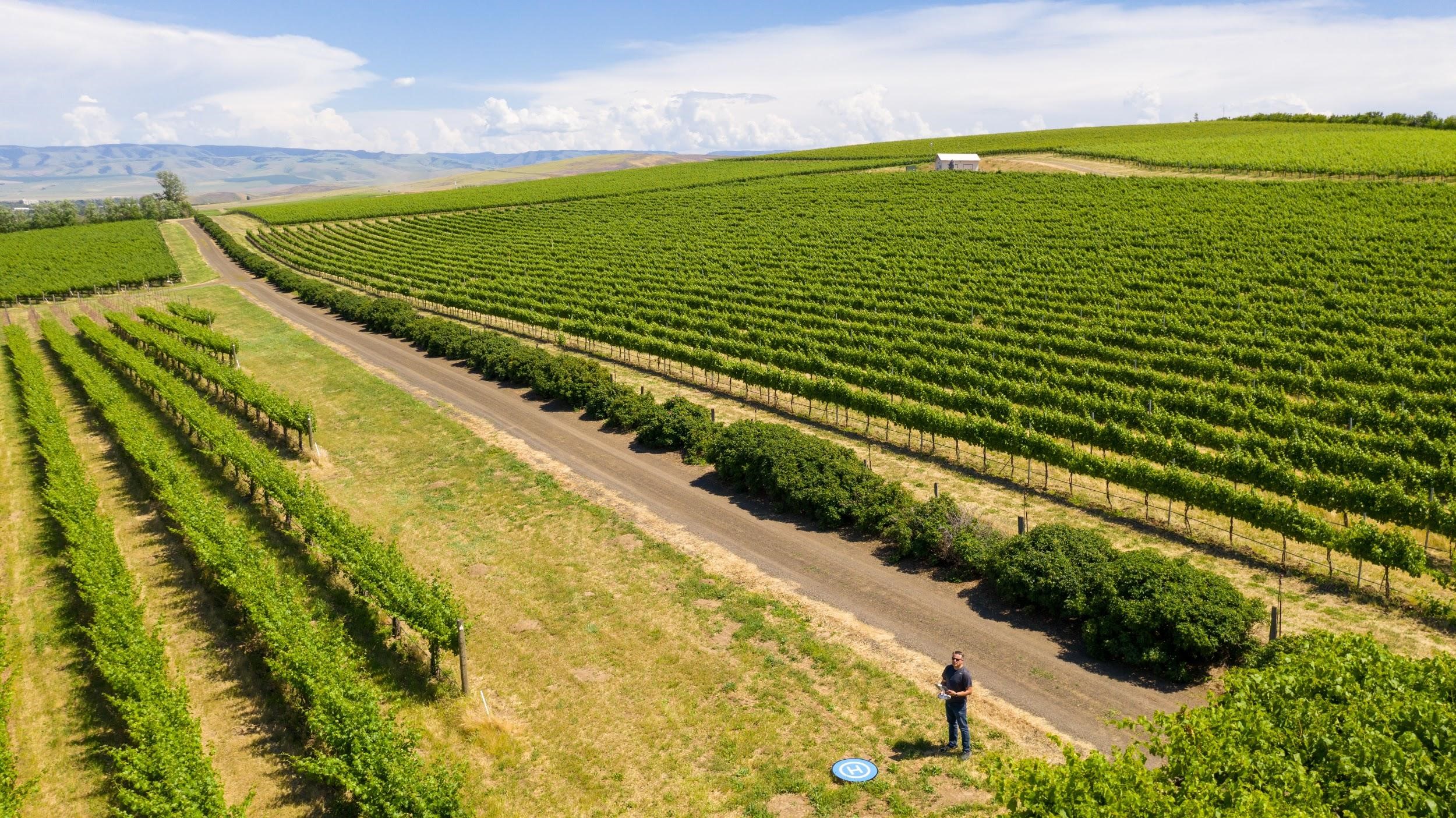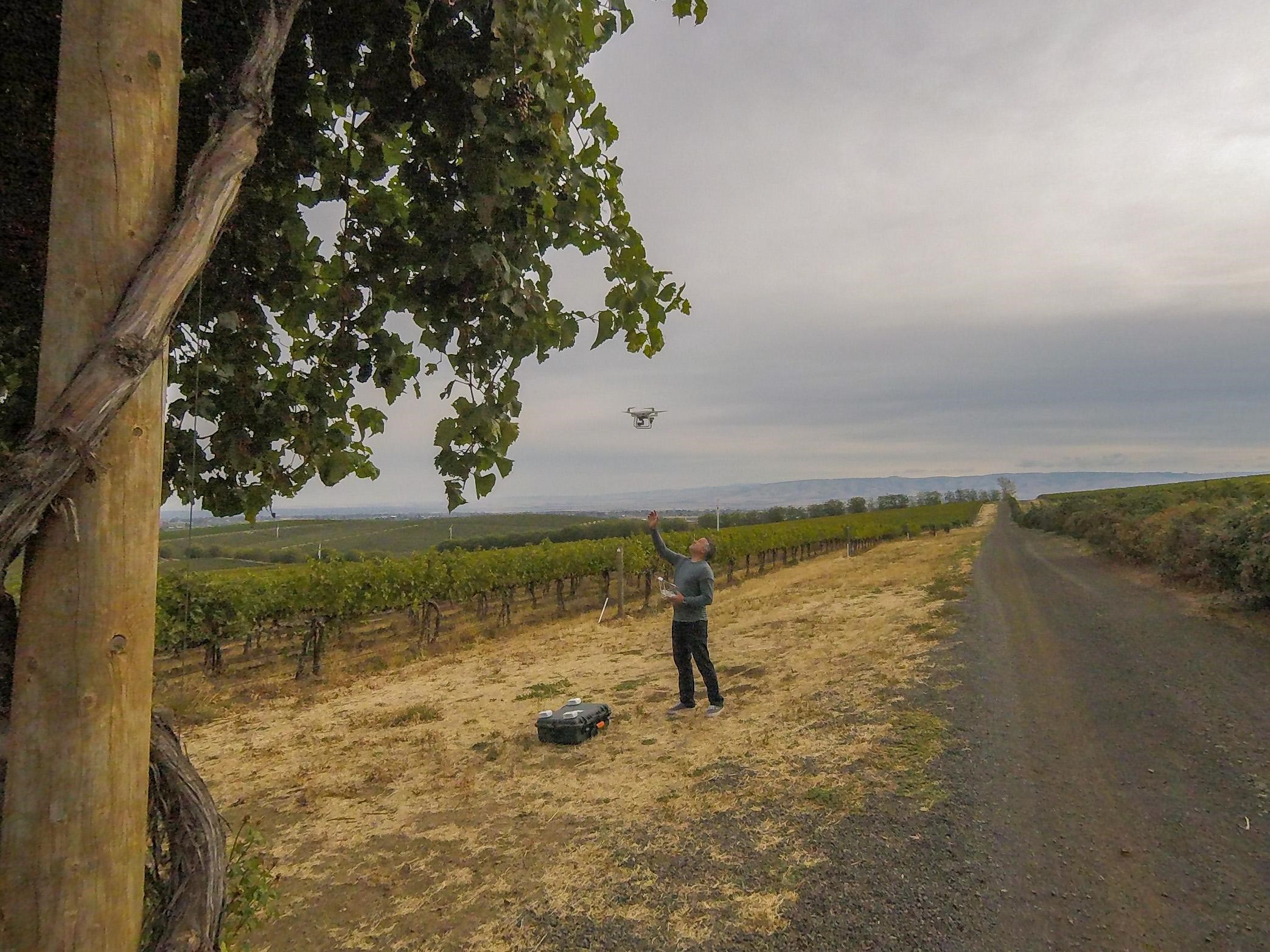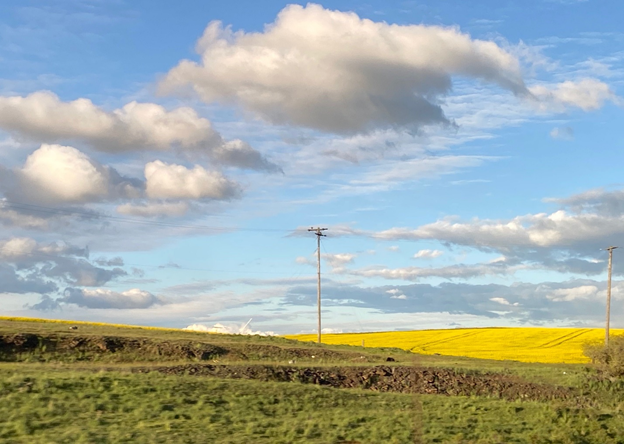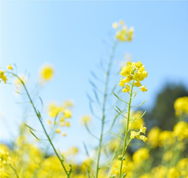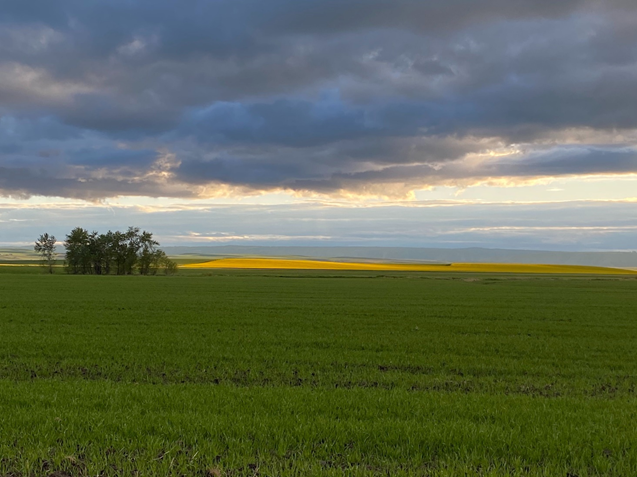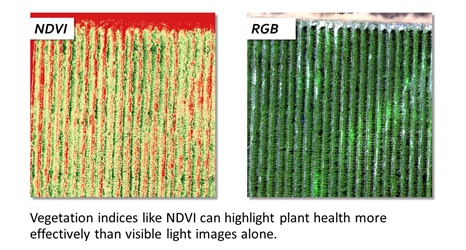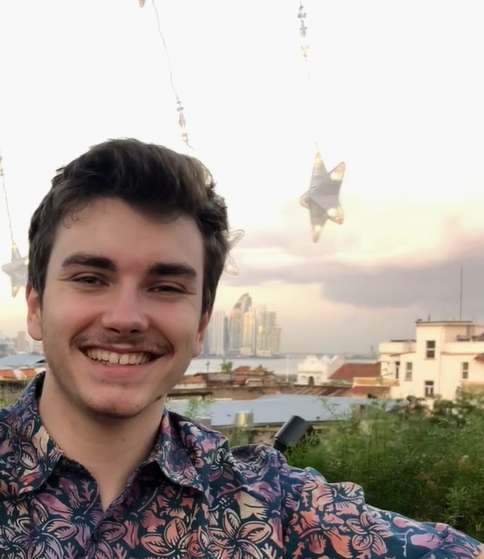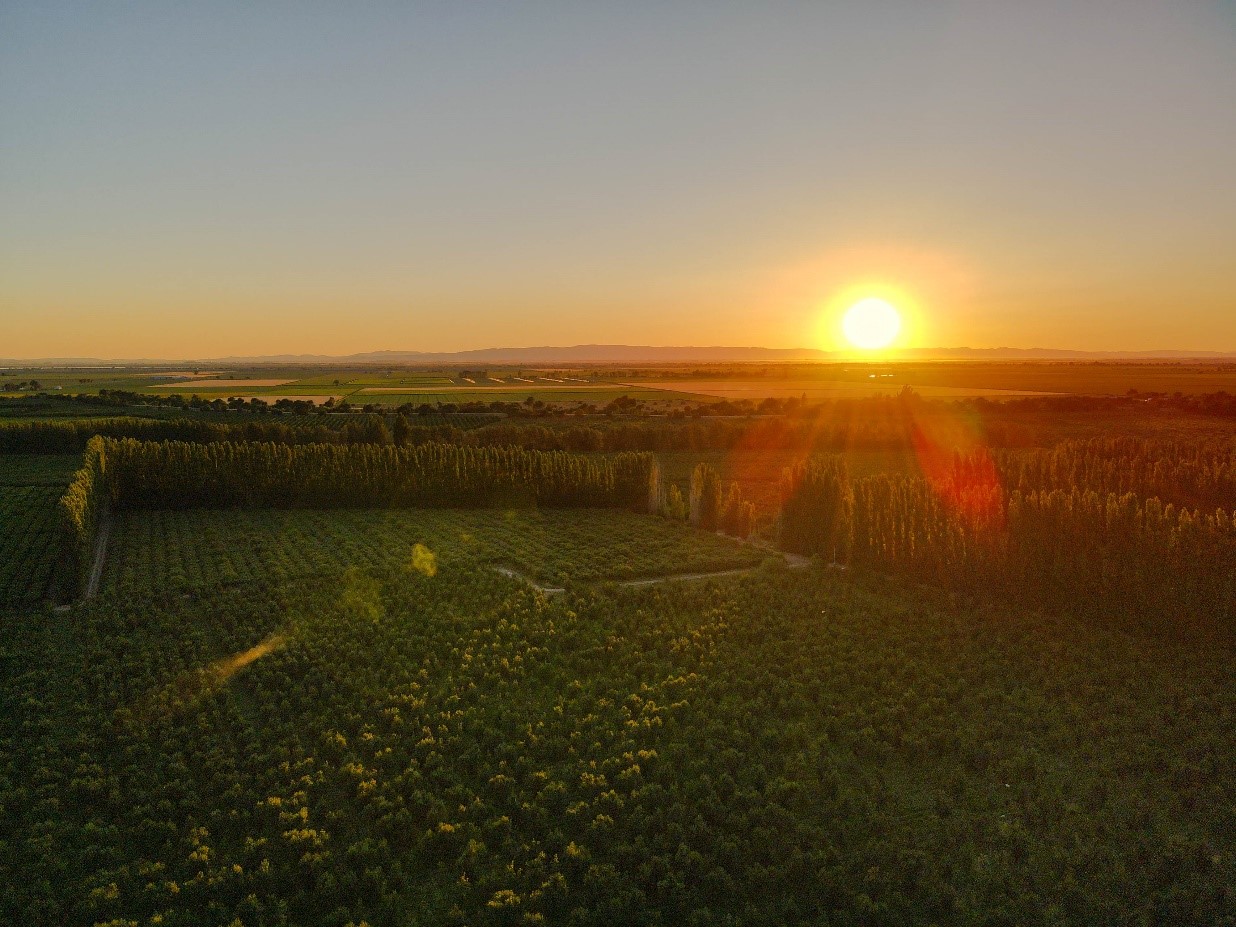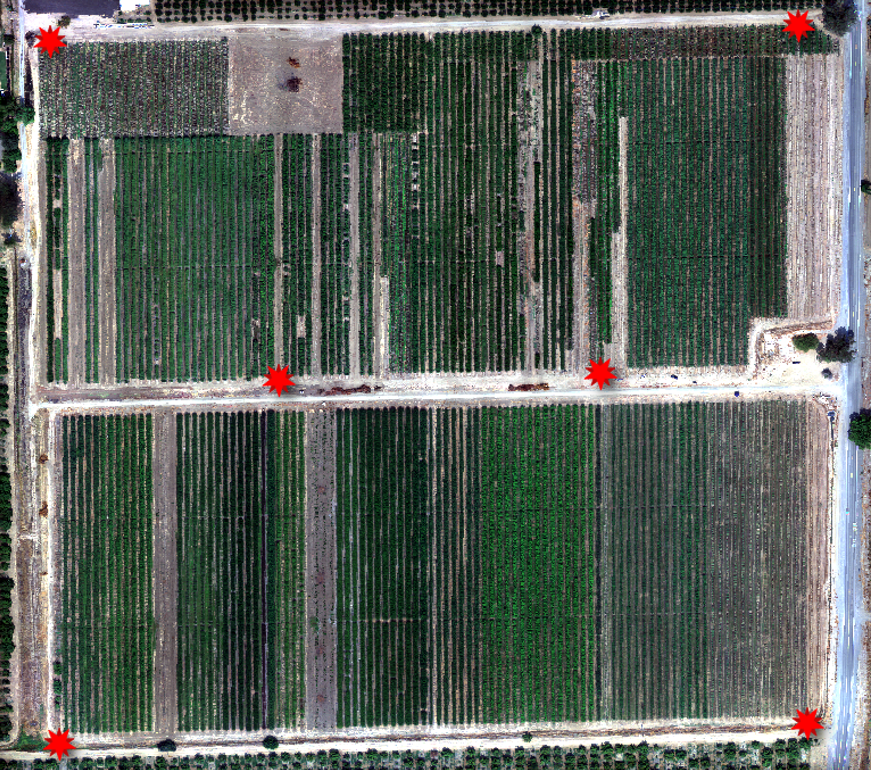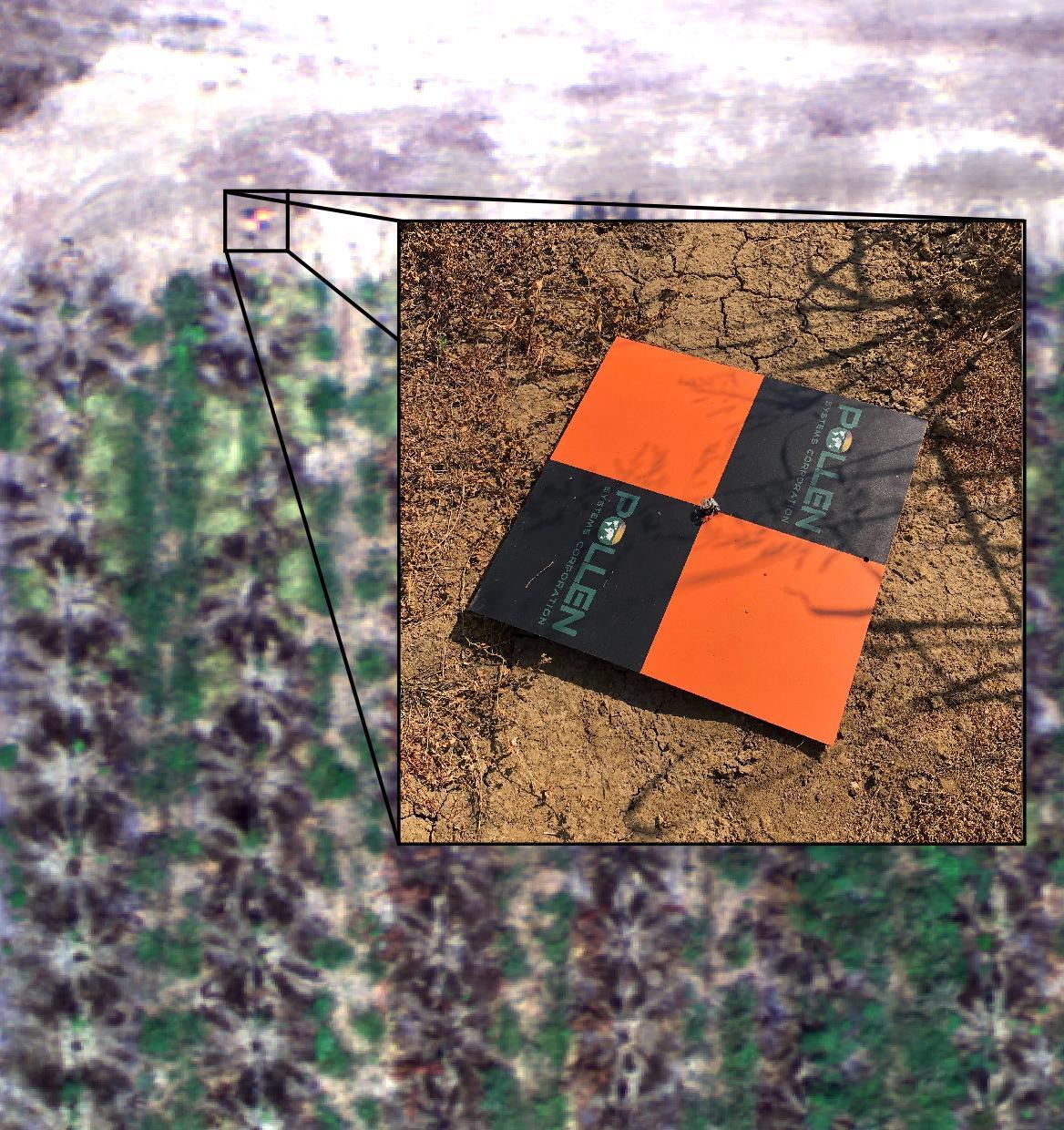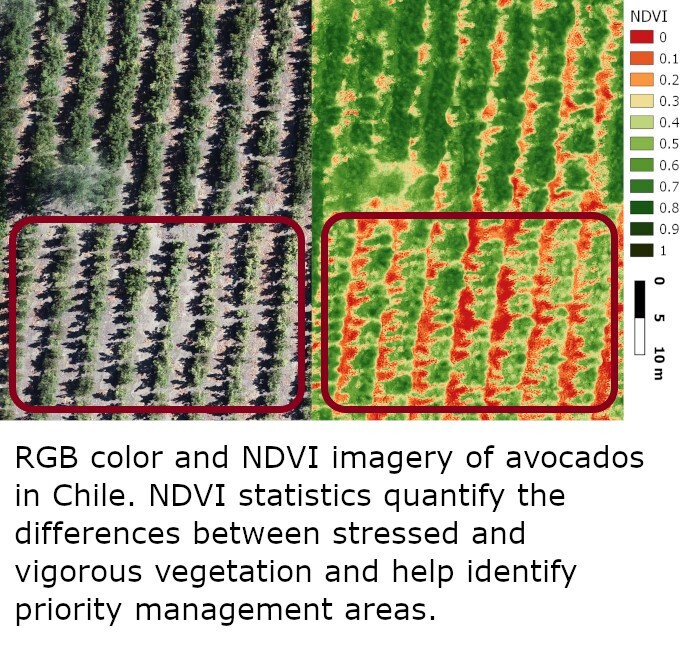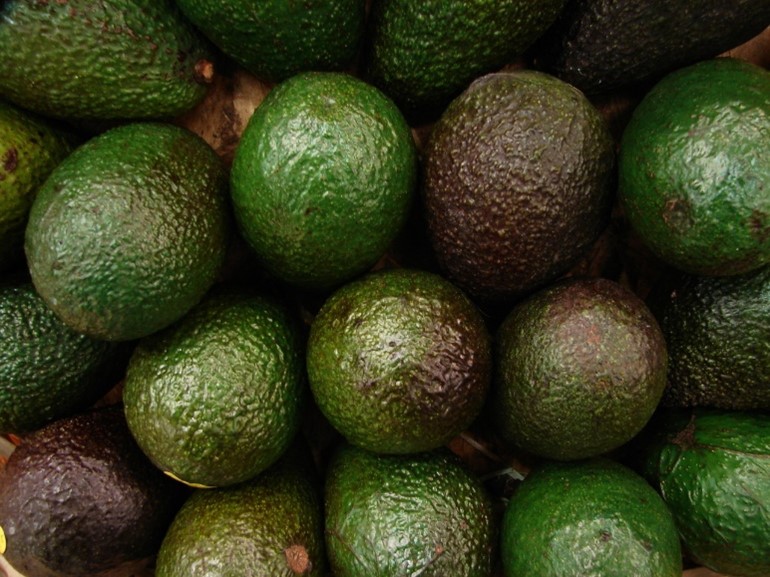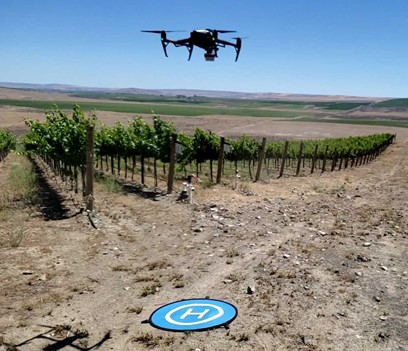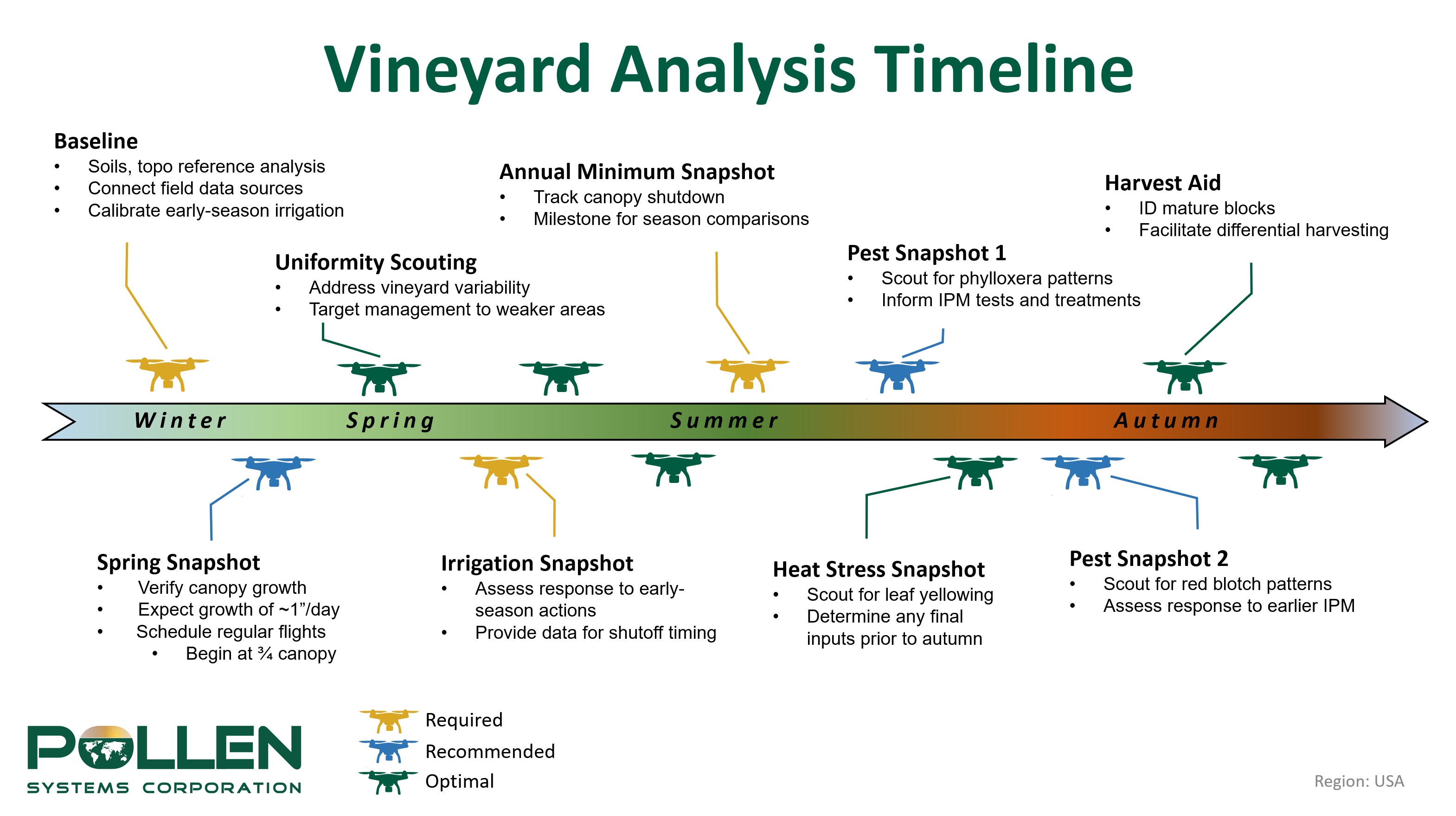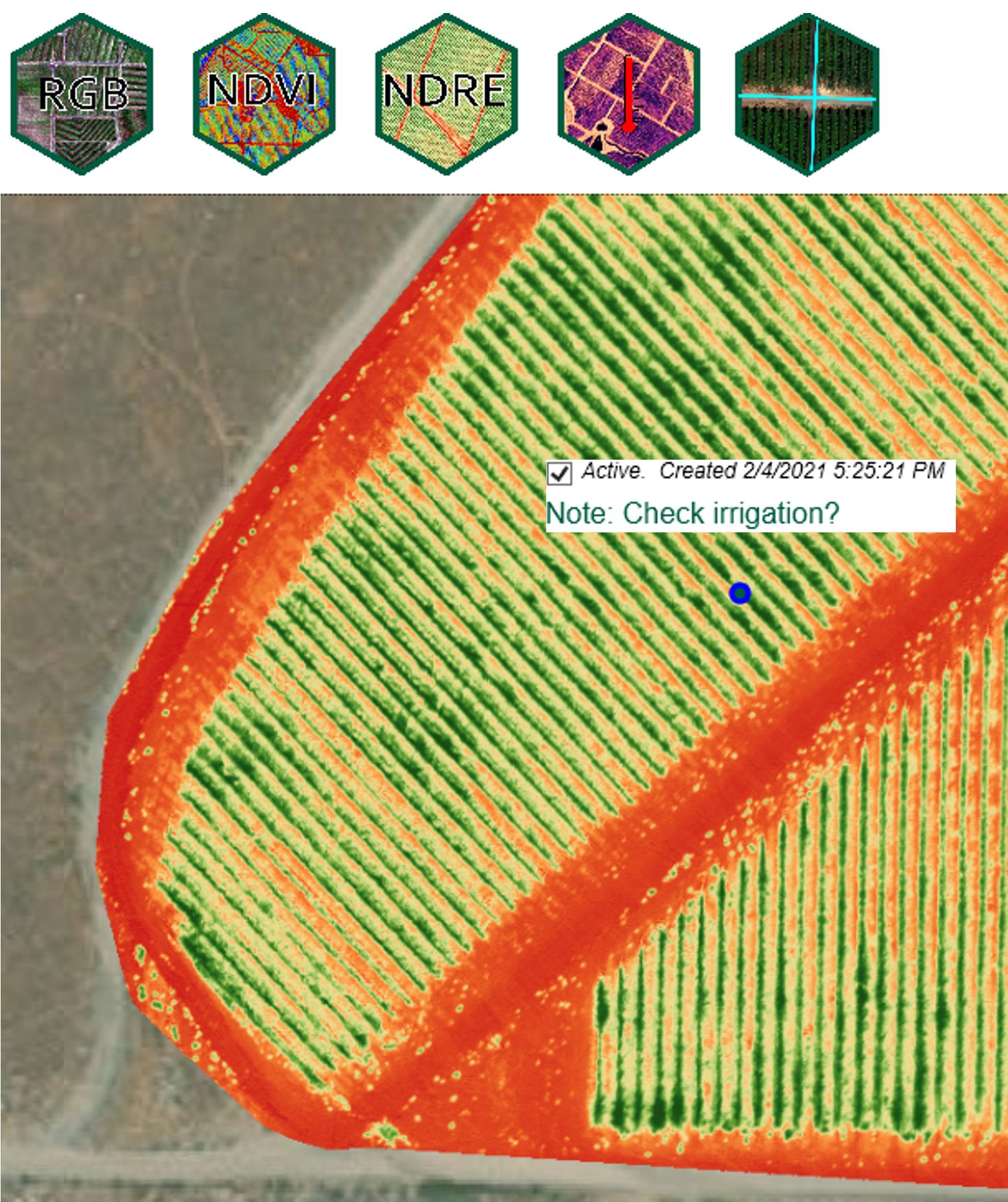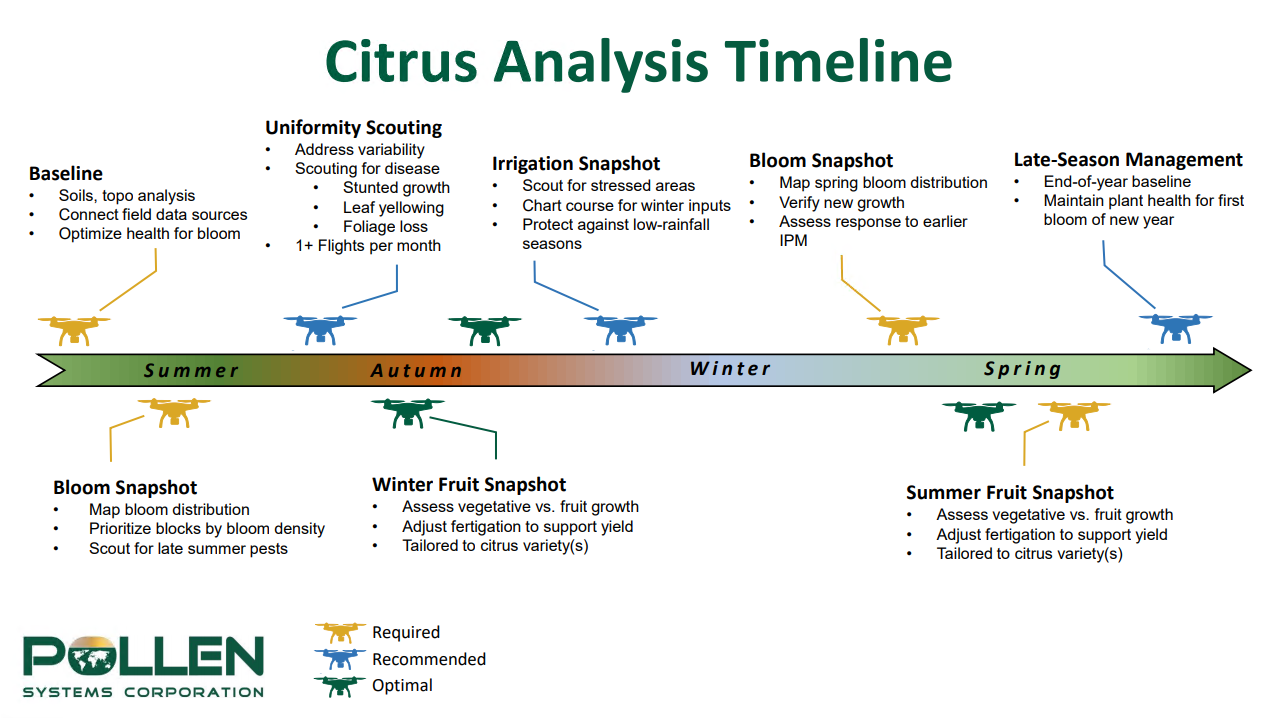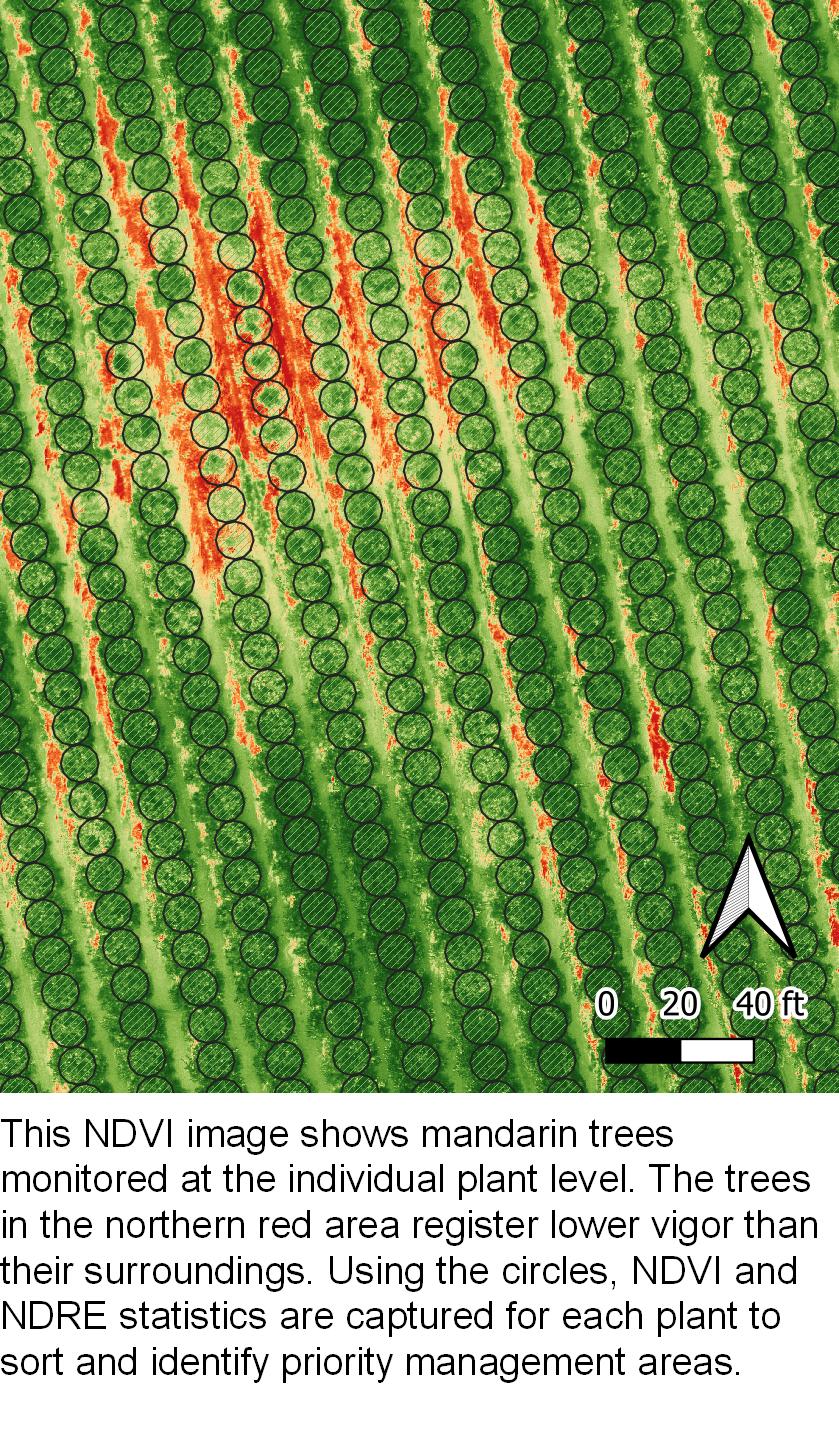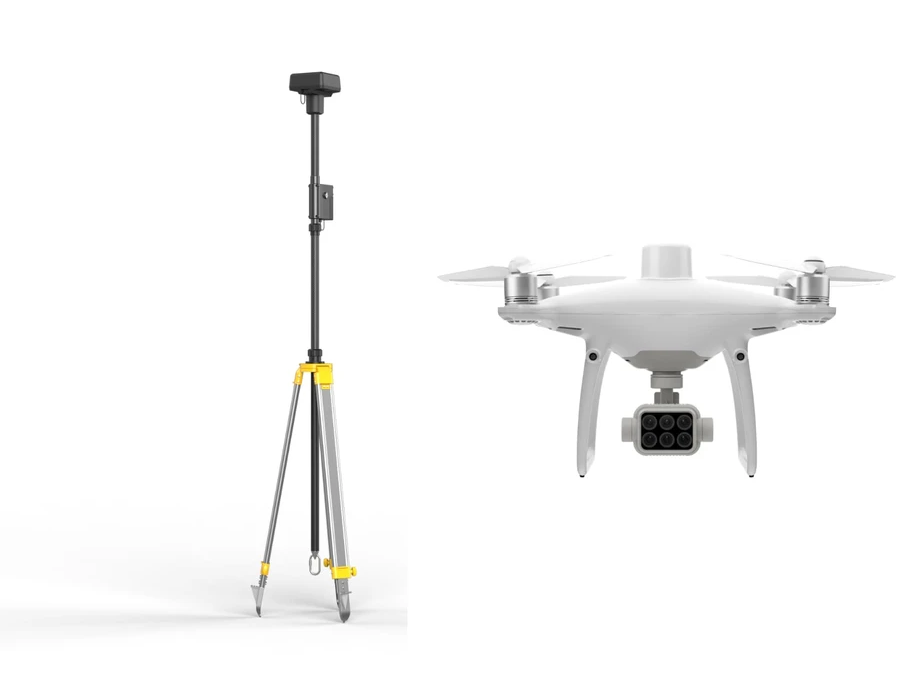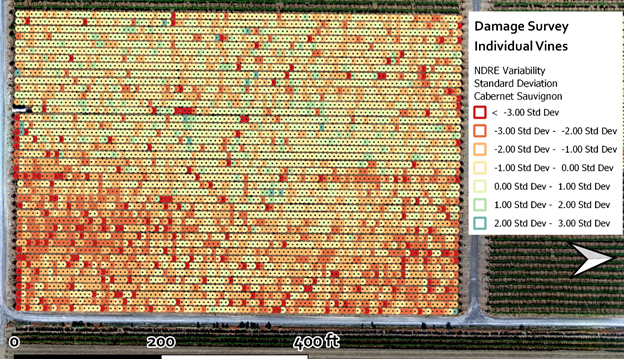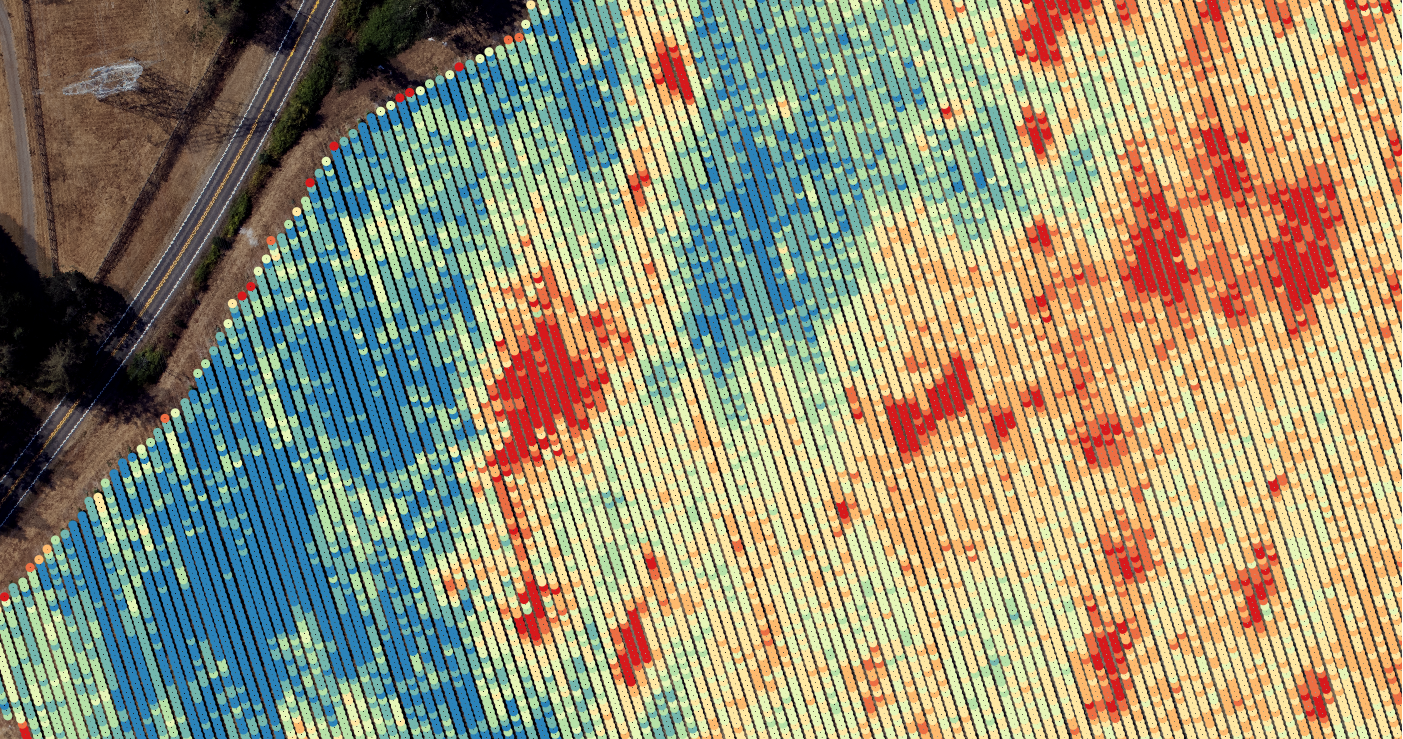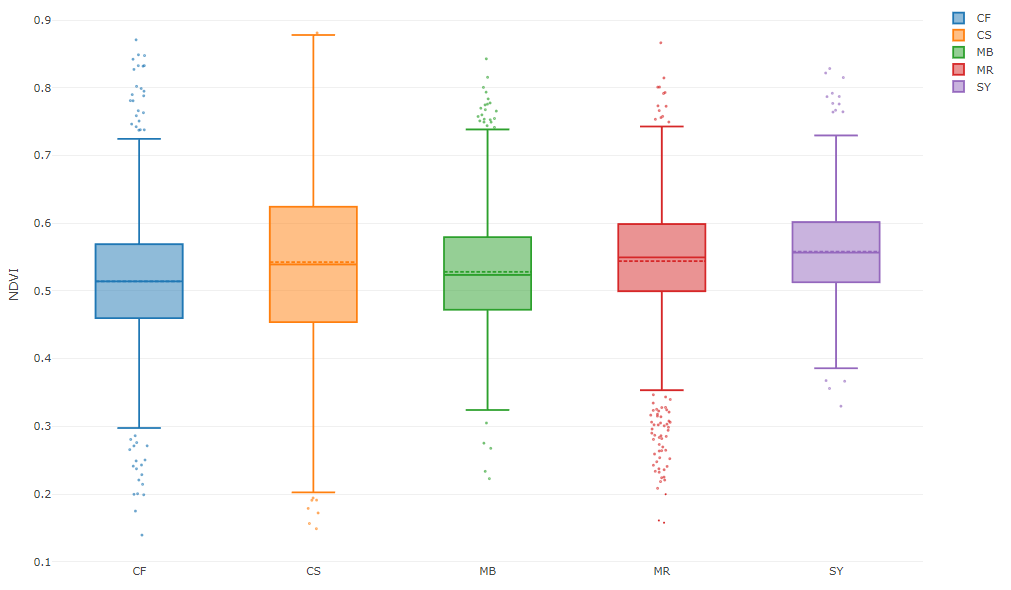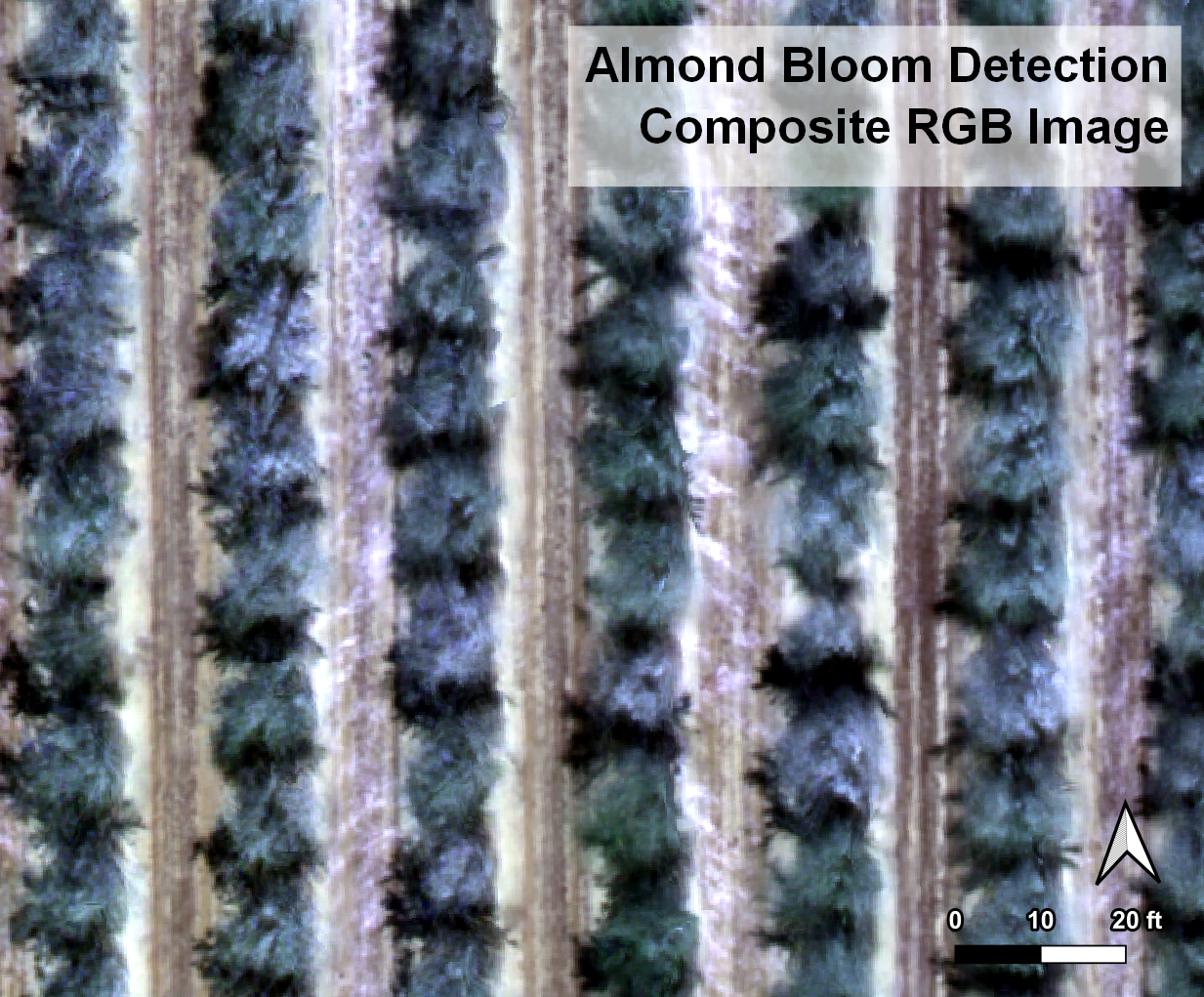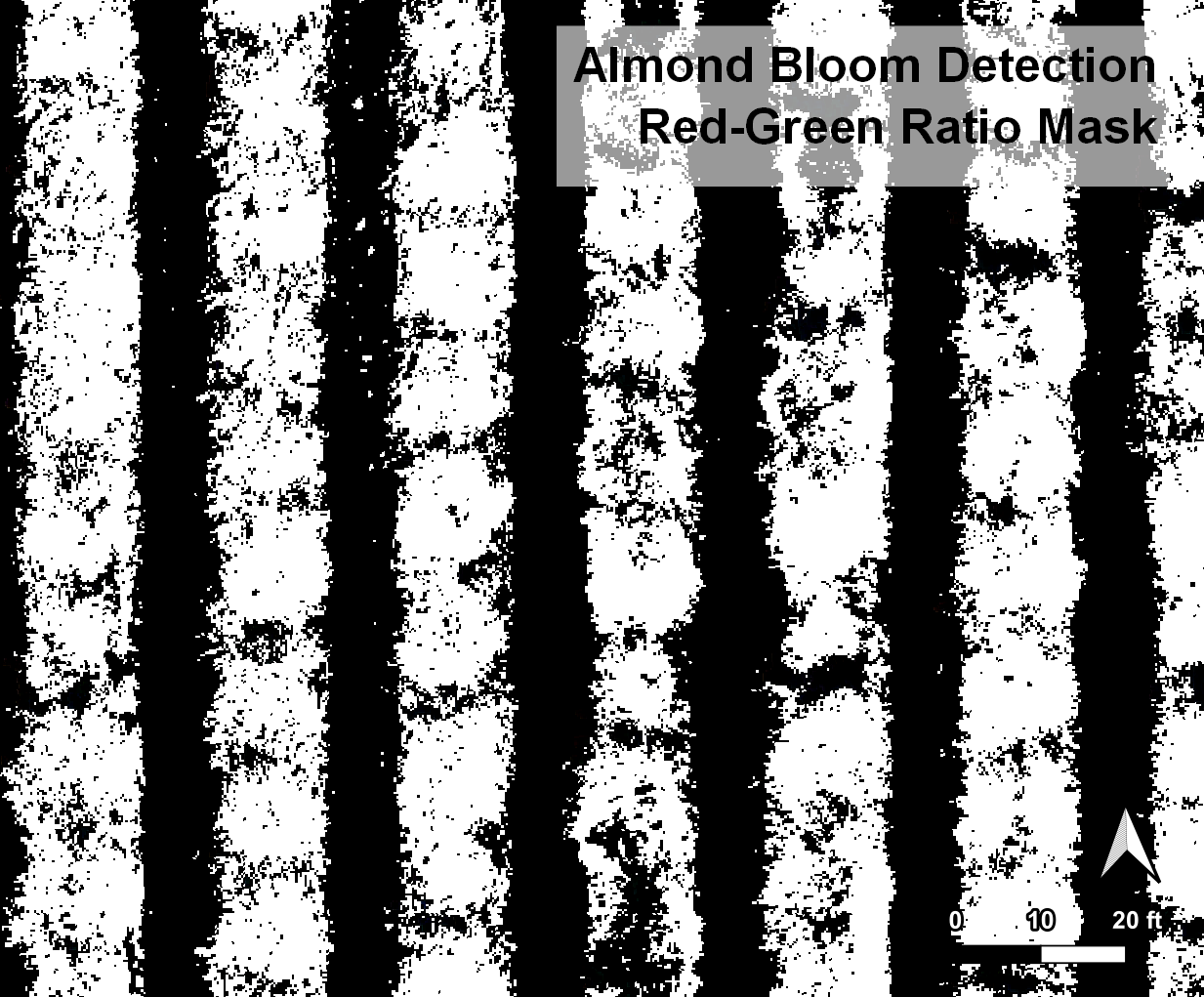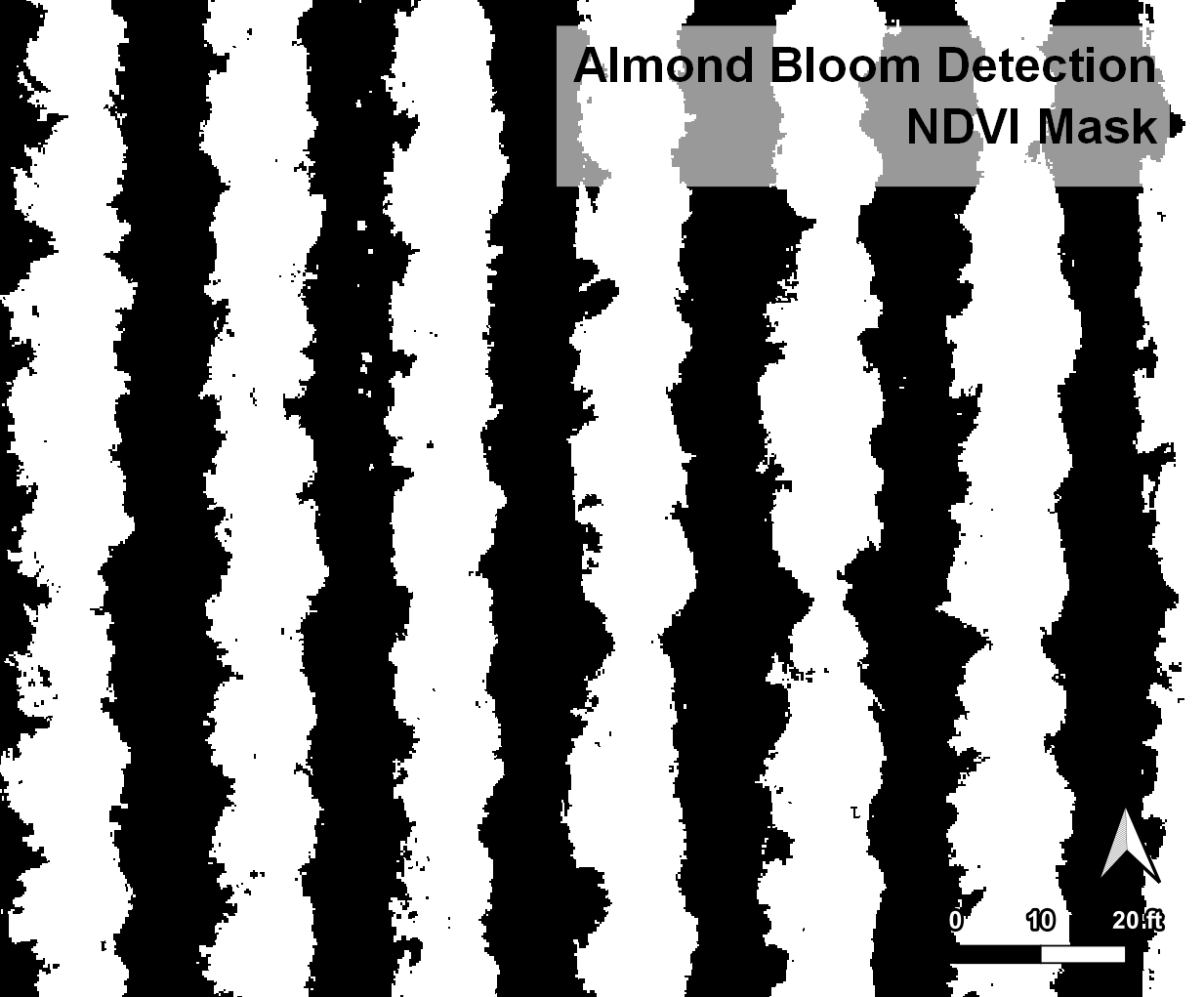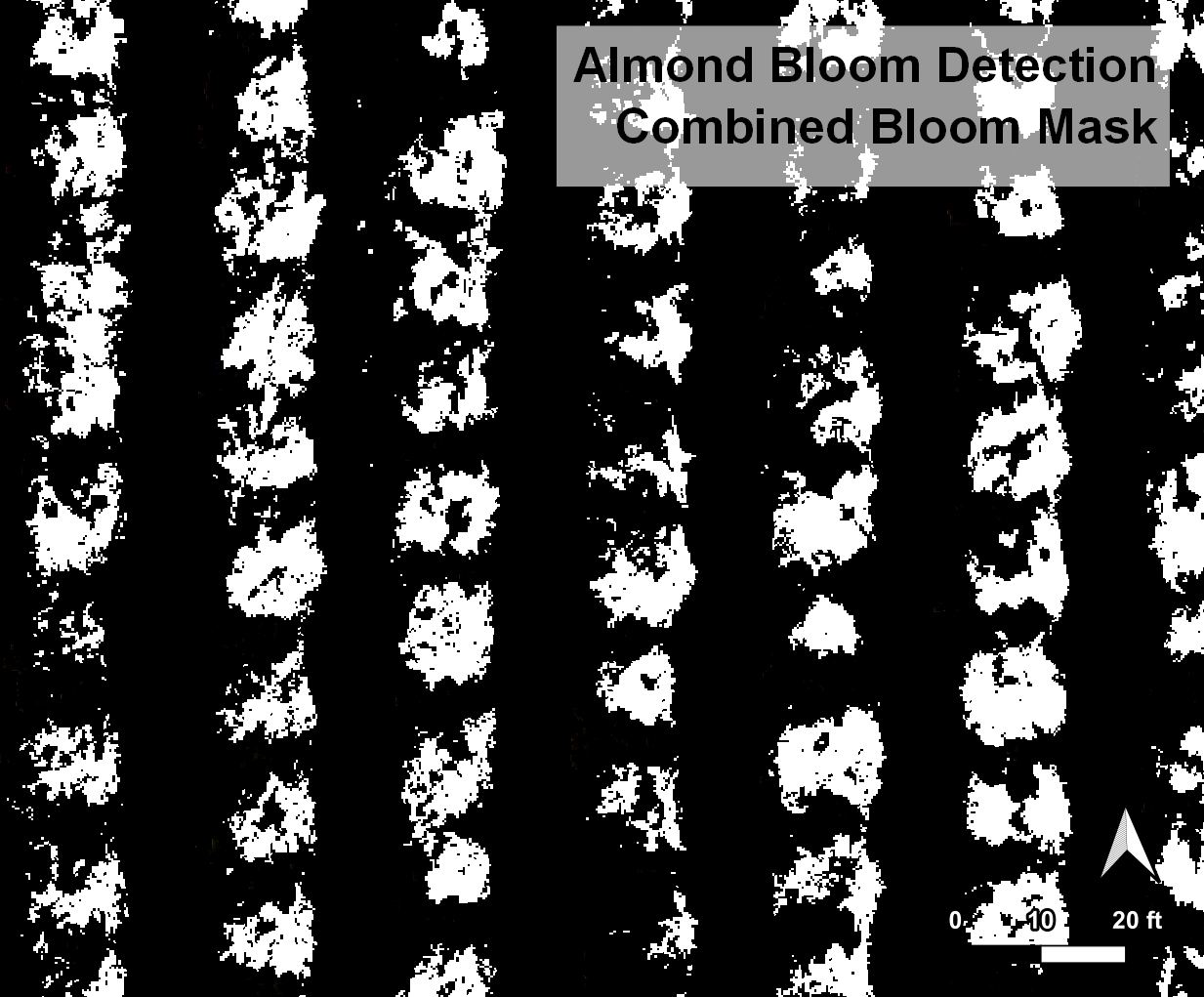Near-Infrared (NIR) imaging has been assisting scientists and growers for decades, providing a technological lens to examine crops. Most famously used on orbital satellites for environmental observations, NIR imaging has developed into highly portable and powerful technology used by commercial growers around the world.
But how does Near-Infrared imaging help growers effectively protect their fields against today’s challenges?
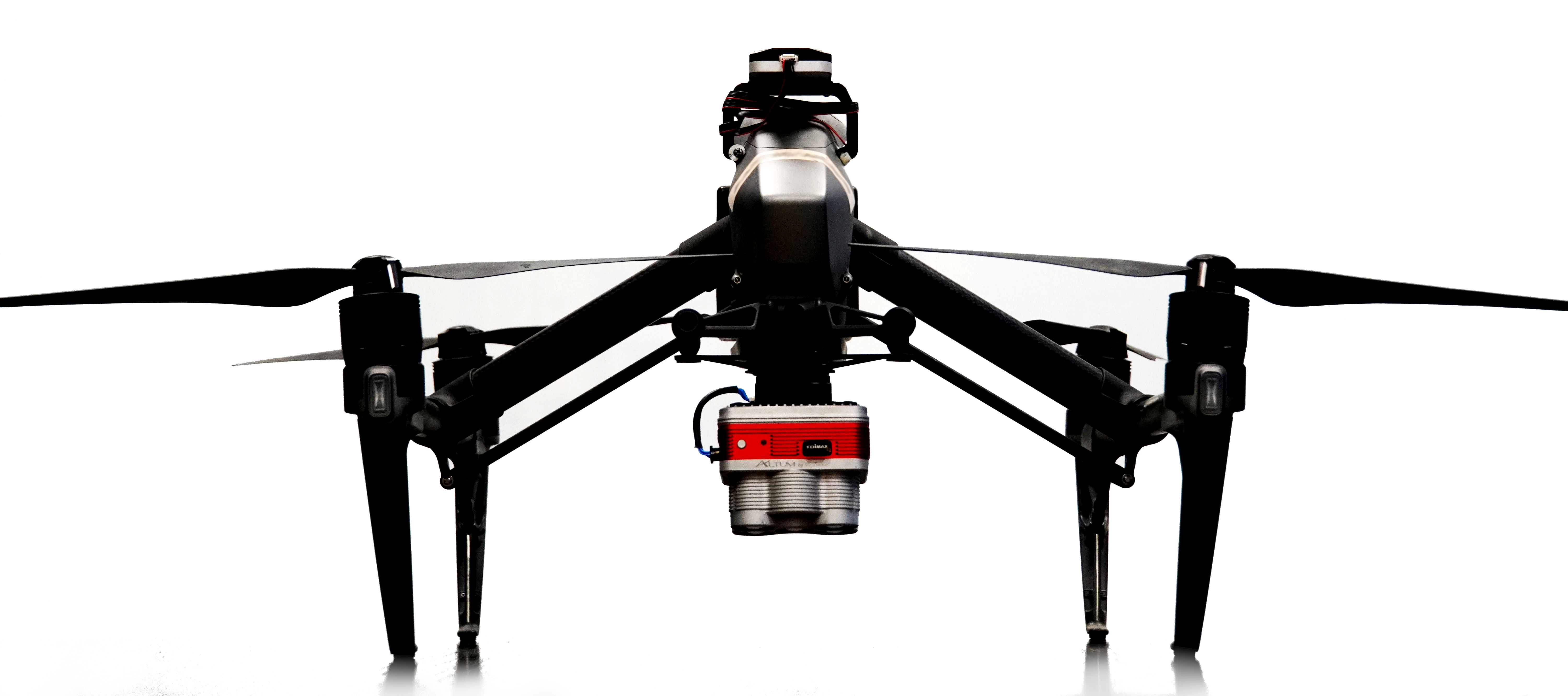
In modern precision agriculture, specialized drones carry cameras targeting specific wavelengths of light. While chlorophyll pigments strongly absorb visible red (600-700nm) wavelengths, they are more reflective in the Red Edge wavelengths (680-730nm) and highly reflective in the Near-Infrared wavelengths (700-1300nm). Based on the proportions of each wavelength reflected by the plant, chlorophyll content can be detected and translated as an NDVI index value:
NDVI = (NIR reflectance – Red reflectance) / (NIR reflectance + Red reflectance)
In vigorous foliage, the amount of red light reflected will be low, and NIR light reflected from the chlorophyll will be high, resulting in higher NDVI values approaching 1. If the foliage is stressed, it will likely have less chlorophyll and more dead tissue, leading to a paler color that reflects more red and less NIR to yield lower NDVI values approaching 0.
Using Red Edge instead of Red in the equation produces an NDRE value instead:
NDRE = (NIR reflectance – Red Edge reflectance) / (NIR reflectance + Red Edge reflectance)
NDRE is more sensitive to small variations in dense canopy, but is normally lower than NDVI measurements of the same crop, since plants usually reflect Red Edge light more strongly than visible red light.
Because they are tied to chlorophyll content, NDVI and NDRE can be used to detect many negative crop conditions. Water deficiency can lead to canopy shutdown and decreased chlorophyll.
Vineyards in Washington use NDVI and NDRE to plan the duration of their summer irrigation shutoff, monitoring canopy vigor week by week to pilot vines into the all-important veraison stage.
Depending on the crop, nutrient deficiencies lead to chlorophyll loss detectable through NIR imagery. In bananas, potassium or magnesium deficiency can cause yellow banding or necrosis. Pest and disease can also induce foliar stress in certain crops, with fusarium yellows in celery shown on the left side of the image below. In this individual plant analysis, the crops in red circles are most heavily afflicted.
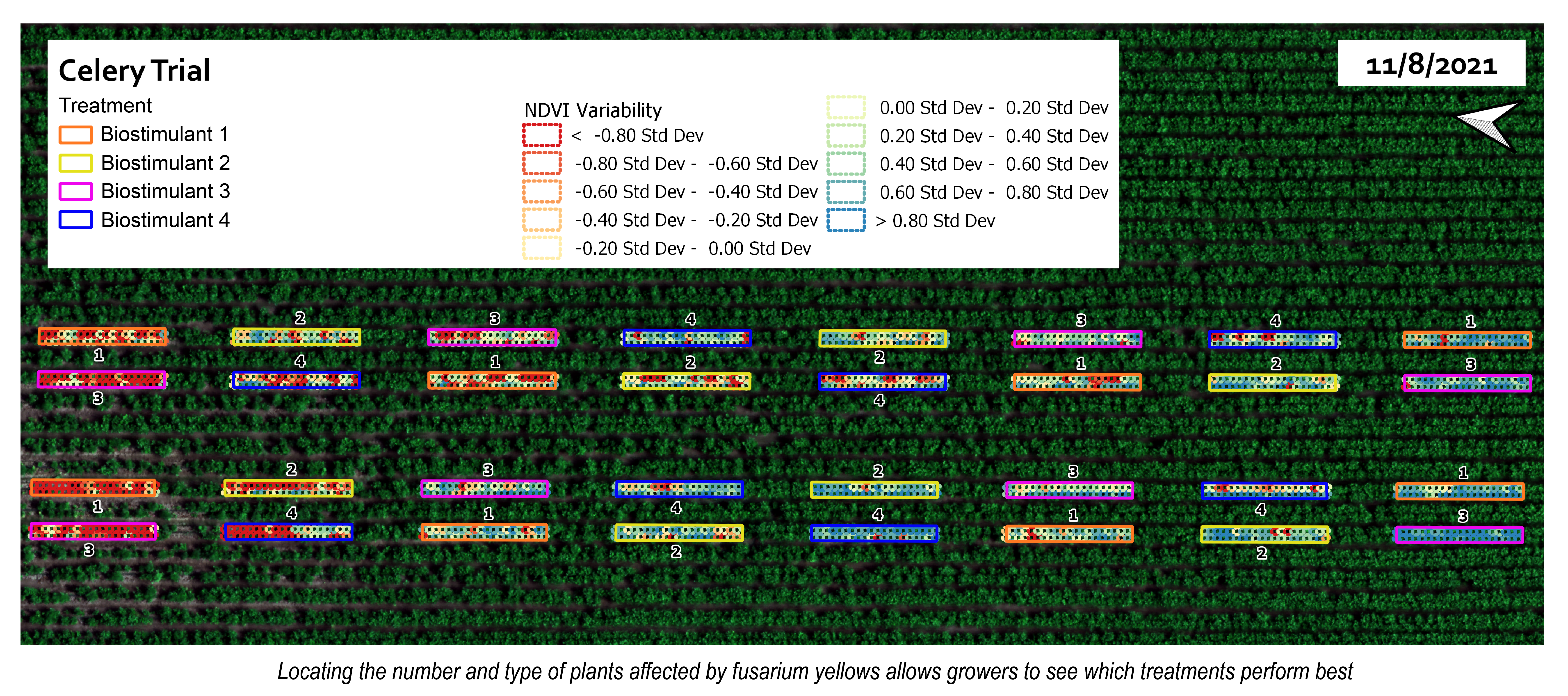
Today, Pollen Systems leverages NIR imaging in Advanced Agricultural Analytics for growers in the US, Mexico, and Chile. Combined with our individual plant analysis and environmental data collected by drone and other technologies, NIR data products like NDVI and NDRE can be used to calculate the locations and number of acres suffering from stress. By referring to our crop-specific analysis timelines and comparing all data layers, we can make observations and suggest management actions tailored to the specific field.
This is especially useful in vineyard management, where a careful balance of managing for yield, quality, and pest control. Sometimes, replanting vines is the best way to reduce the impact of disease, but doing so sacrifices any remaining yield that could have been obtained by nursing vines through a few more seasons.
Clients have used our system to identify severe phylloxera symptoms in their vines and remove the ones that were not worth nursing. Because they receive specific numbers of plants affected in each area, they can budget their replanting costs months before removing the old vines and clearly justify that cost to stakeholders.
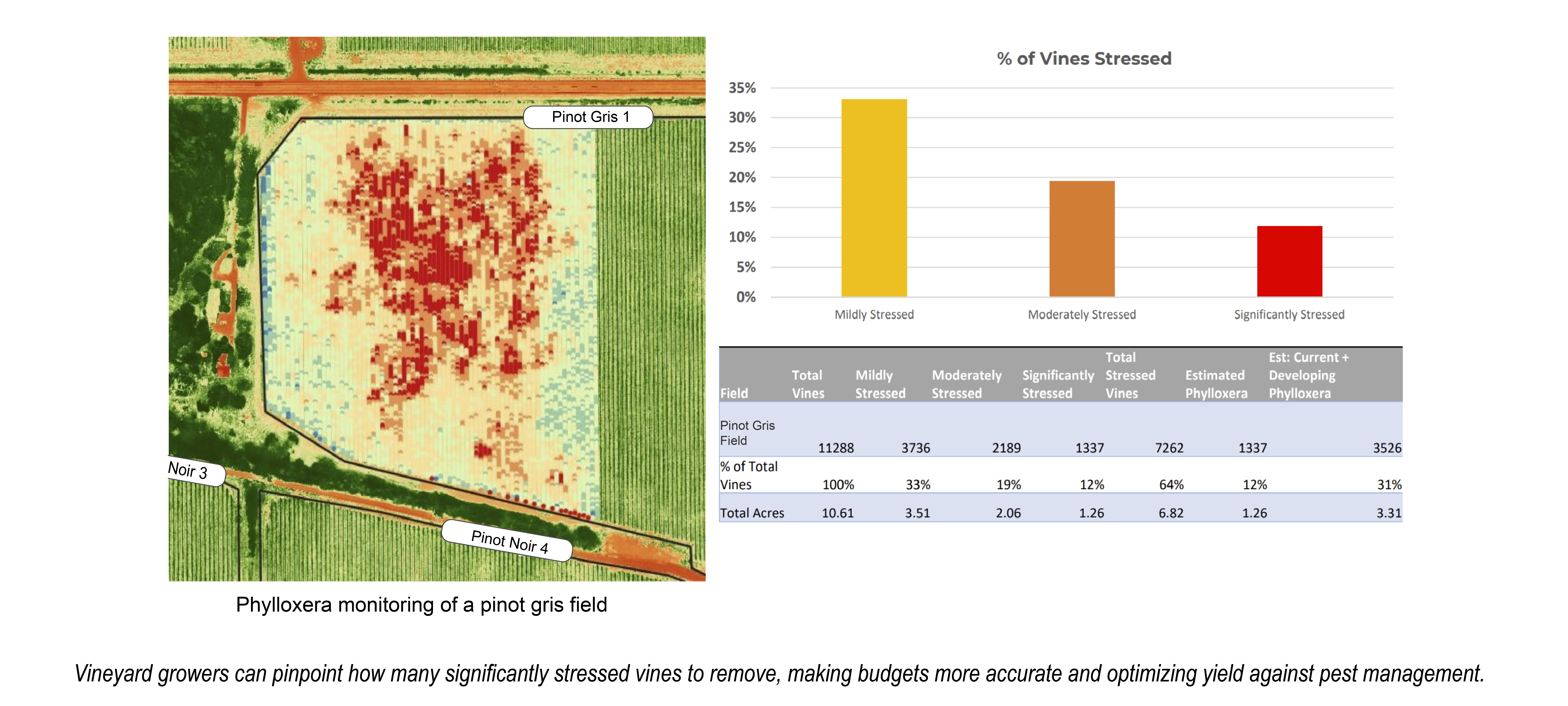
This is just one way that growers have gained valuable insight through the Near-Infrared imaging technology we provide. With the power of PrecisionView Manager™ behind it, drone imaging produces more than pretty pictures – it generates a library of data that growers can leverage season after season.
To learn more about our advanced agricultural analytics and how we can serve you, reach out to us at [email protected]!
